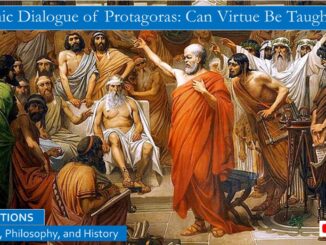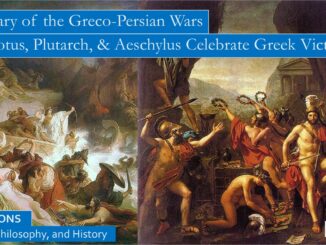
What can we learn by reflecting on the life of St John the Russian?
How can a slave become a saint?
How can a slave whose prayers are his only accomplishment become a saint?
Could St John the Russian be considered a patron saint for failures, according to the standards of the world?
This is the story of the saint whose icon we display in our small studio.
There are only websites for our sources, so these are our favorite Orthodox resources.
Powerpoint script, with Amazon book links:
https://www.slideshare.net/BruceStrom1/st-john-the-russian-prayers-and-kindness-were-his-only-accomplishments
YouTube video for this blog: https://youtu.be/xvdw-EIzbog
ST JOHN THE RUSSIAN
To be honest, if you search the internet you will find nobody else who claims that St John the Russian is the patron saint of failures. That is what has attracted him to me, I have not had much business success since I am too guileless to be a good salesman and have never asked a boss for a raise in my life.
This reminds me of something I heard in the videos for our DivorceCare support group. They said that even if you are divorced, God still has a plan for you. This struck me as odd that they would need to say it this way, because as long as you can be kind to somebody tomorrow, of course your life has purpose. How much more complicated can living a godly life be?
https://www.divorcecare.org/ and https://www.catholicsdivorce.com/
This was the same theme in another favorite book of mine, a life changing book, Man’s Search for Meaning. The psychologist Viktor Frankl tells of his struggles to survive the Auschwitz work camps under the Nazis, how even when you live under the most dehumanizing conditions, you can still find meaning in life by being kind to others, by finding meaning in serving others, whether that be those who you love, or your neighbors, or your career that gives to others.
Man’s Search for Meaning: https://youtu.be/O-YtC9qGWPI
The church in the thumbnail is the Holy Shrine of St John the Russian in Greece, where most of his relics currently reside. If you access their website, they have the exhibits in their small museum dedicated to St John the Russian and history of Orthodoxy in the Ottoman Empire.
St John the Russian was born around 1890 in Little Russia and served as a simple soldier in Peter the Great’s army, fighting in the Russo-Turkish War in 1710. He was captured during battle, but rather than being executed, which was the practice during ancient times, he was sold into slavery, serving as a house servant for the head of the Turkish Calvary, or Agha, on his farm in Cappadocia in central Turkey. Although he was treated like a slave, house slaves are generally, though not always, treated better than field slaves or industrial or mining slaves, though women slaves always were helpless against sexual abuse.
Many of the enslaved Russian soldiers converted to Islam, hoping for better treatment, but St John refused to deny Christ by converting. In response, the Muslims and his master beat him and tortured him, but he was not swayed, enduring these humiliations.
St John was assigned to live and work in the stables, grooming the horses, serving his master in the summer heat and the winter snow. He was mocked by his fellow slaves for his hard work, but this, and his kind nature and gentle soul, won over the hearts of the Agha and his family. Soon his kindness and industriousness helped his master’s farm to prosper.
St Paul in Galatians instructs slaves to work for their masters as if they were working for Christ himself. Some commentators apply this verse to the current day, saying that employees should work for their bosses with diligence and cheer.
St John led a life of prayer, often praying in secret in the cave church of St George, taking Holy Communion every Saturday. Despite his poverty, he helped the needy and sick, sharing with them his meager rations.
MIRACLE OF THE RICE PILAJ IN THE MECCAN HAJJ
Due to his prosperity, his master the Agha was able to travel to Mecca as a pilgrim to perform the Hajj. While he was away, his wife invited their friends and relatives to a banquet. St John was serving and set a piping hot dish of rice pilaf on the table, his master’s favorite dish. When his wife wished that her husband were home to share this favorite dish, St John asked for a dish to send it to him in Mecca. Everyone laughed, thinking he would give the rice to some poor Christians, so they gave him a dish heaping with rice pilaf. St John took the dish into the stables, prayed to God to send it to his master, and the dish promptly disappeared. He returned, saying the dish had been sent to his master.
In Mecca, at the end of the day, when the Agha unlocked his room, he was astonished to see a piping hot dish of rice pilaf! What was even more surprising was that his monogram was etched on his plate, which he recognized. This astonishment was shared by those in the village when he brought the strange plate home, with his monogram, with his strange story. They had assumed St John had sold the dish for alms.
LIVING A QUIET, PRAYERFUL LIFE OF OBSCURITY
His master offered St John a small house to live in, but our saint preferred to live in humility in the stables, leading a life of prayer, chanting the psalms, with only an old coat for cover against the cold night. Toward the end of his life, falling ill, he summoned the priest to receive Holy Communion. Fearful f the Turks, he brought the Eucharist hidden in an apple. He was buried by the Church of St George. When the Greeks were expelled from Turkey in 1924, his relics were brought to their new home in Euboea. His right hand is in the Russian monastery on Mt Athos.
If Muslims convert, they risk certain execution, especially in this early time, so there is no record that St John the Russian converted anyone. There are accounts of miraculous healings and event after his death, but during his life his kindness and prayers were his only accomplishments.
DISCUSSING THE SOURCES
Our sources include pages on St John the Russian in Wikipedia, and also on the OCA, or Orthodox Church of America page, and also the website for the Holy Shrine of St John the Russian on the island of Euboea in Greece.
https://en.wikipedia.org/wiki/John_the_Russian
https://oir.gr/saint-john-the-russian/a-brief-life-of-saint-john-the-russian/?lang=en
This is the contact information for the Holy Shrine of St John the Russian:
Prokopi, Evia, Greece
Somewhat Nearby:
Ancient Greek Delphi Temple
Call Center: +30 2227041462 +30 2227041209 (ext.1)
email: naos@oir.gr
Hours of operation of the Holy Temple (at 03/2023):
Winter season: 7:00 – 19:00
Summer season: 7:00 – 21:00
We found many of the St John the Russian icons on the Orthodoxy Mystagogy website.
Orthodox practice differs from Catholic practice in that Orthodox devout can be declared saints without proving they performed miracles. However, there are numerous delightful miracles attributed to the relics and intervention of St John the Russian, including miraculous healings and anonymous appearances which are listed on this website. Enjoy!




Be the first to comment